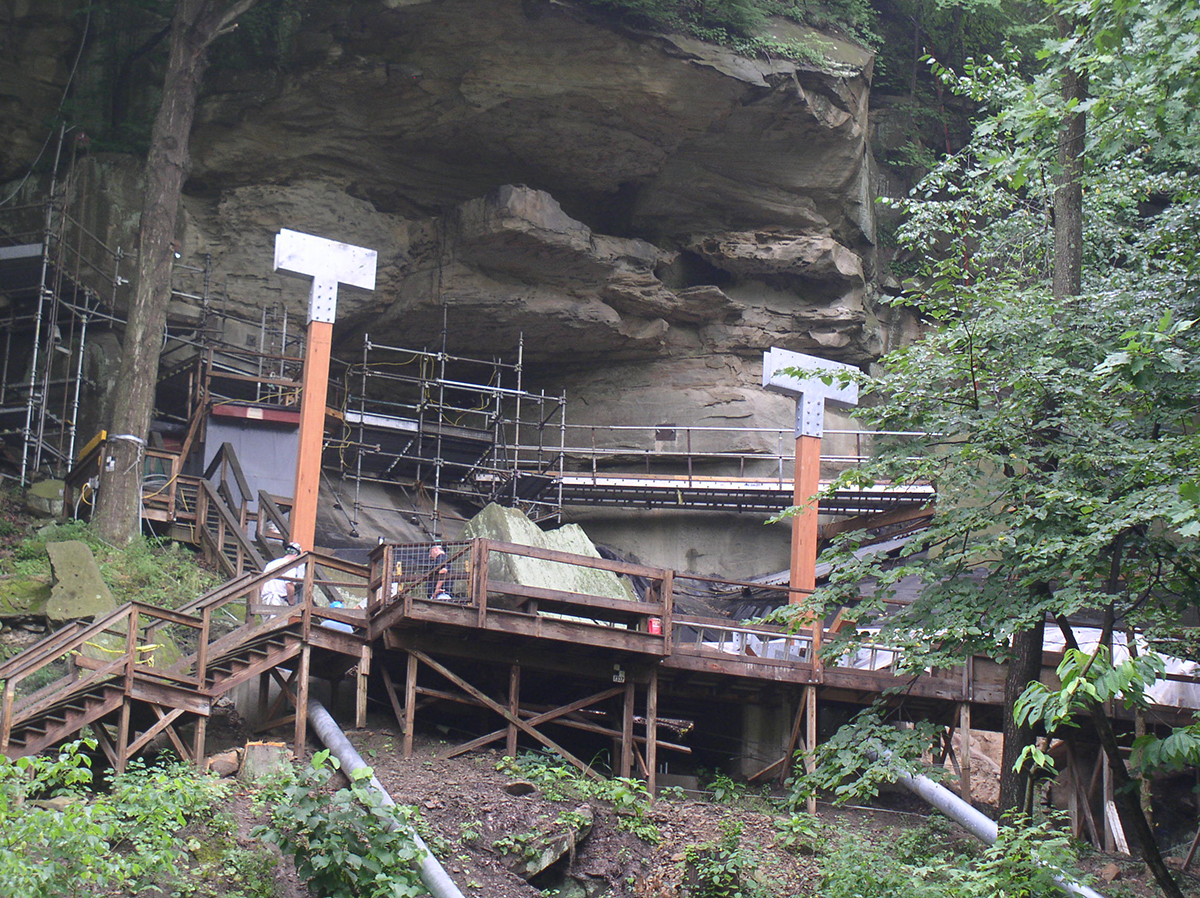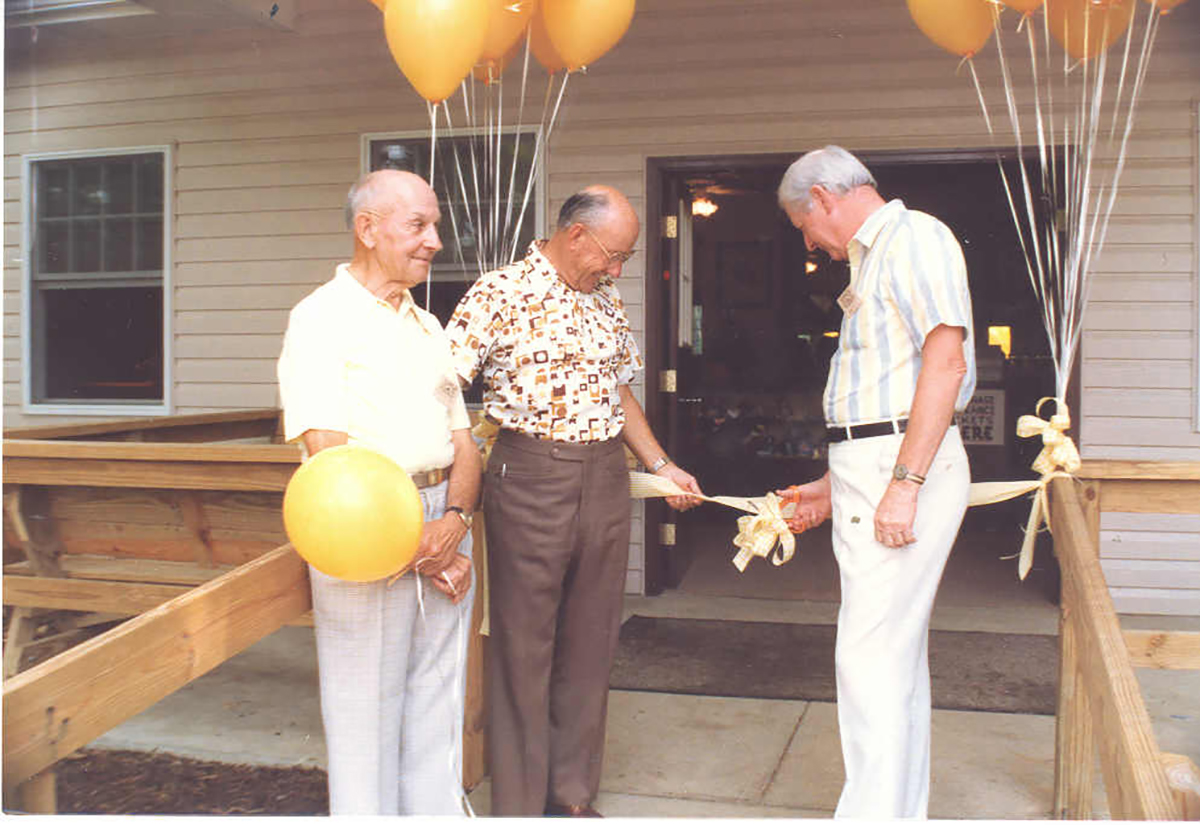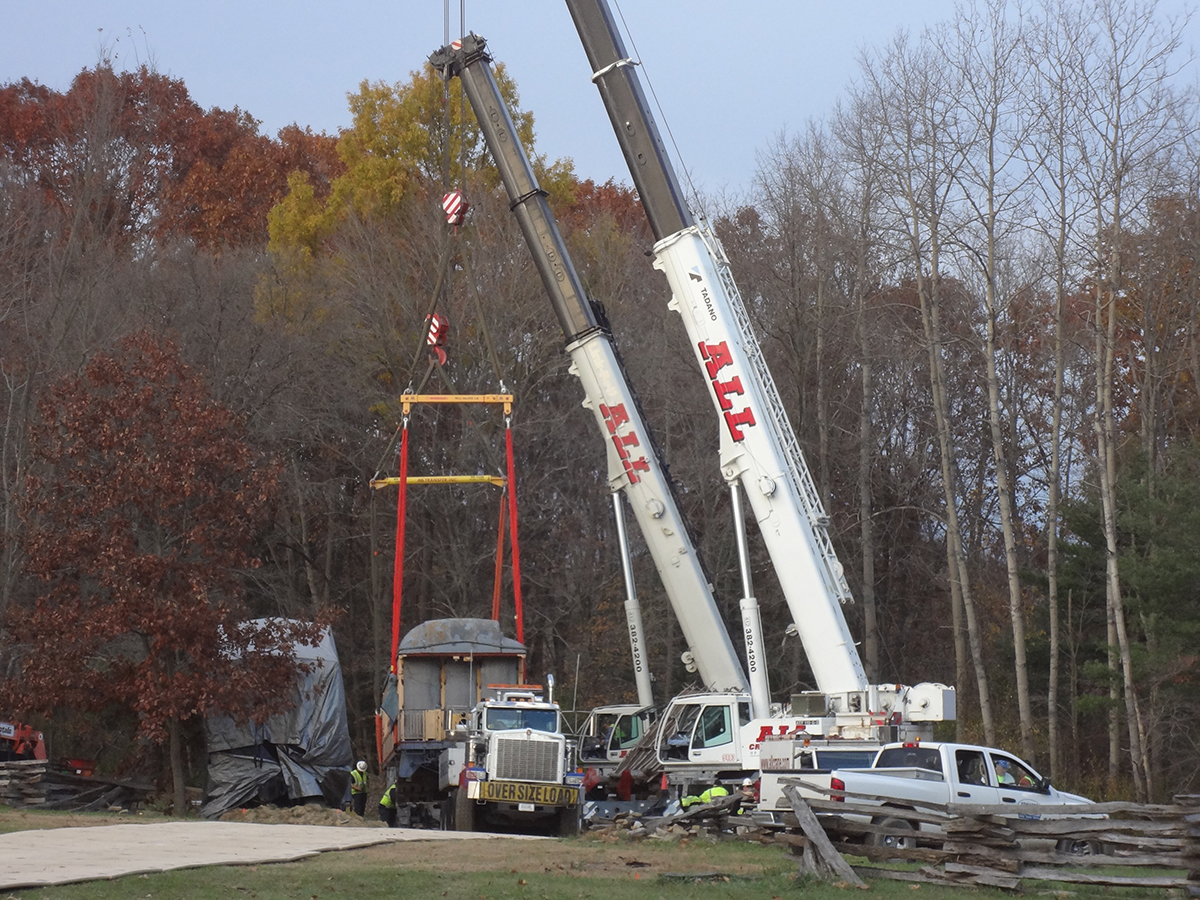As Meadowcroft continued to develop under the leadership of the Millers, it took on the brothers’ personalities. Delvin’s love of everything equine was the root of his amassing horse-drawn vehicles for display. Because of his affinity for pre-industrial farming, Albert amassed a large collection of 18th and 19th century agricultural equipment. The varied interests of those involved in Meadowcroft’s growth created a diverse collection of buildings, artifacts, and archival material.

As the museum developed on top of the hill, it would be what was found below that would make Meadowcroft a name known ‘round the world. Meadowcroft’s Historic Village sits atop a roughly 72-foot sandstone cliff—an area historically known as “The Cliffs.” It was along this cliff face, under a large overhang, or rockshelter, that Albert recovered the earliest documented artifacts from our archaeological site in 1955. Excavation of the Meadowcroft Rockshelter began in 1973, and by 1974 the results of the radiocarbon dating from the site suggested that the archaeological work had uncovered the oldest site of human habitation in North America.
The 1980s saw major developments as a Visitor Center was built and the Miller Museum replaced Camp Meadowcroft’s Adirondack shelters to make room for its growing collection. The museum building was constructed in stages throughout the 1980scontinues to exhibit Albert’s farming tools in the Working the Land exhibit, and a few of Delvin’s vehicles can be seen in the On the Go exhibit.
By the early 1990s, the aging Miller brothers saw that they were going to need outside help to keep their dream alive. To ensure their legacy would last beyond their years, the Meadowcroft Foundation entered into a joint operating agreement with the Historical Society of Western Pennsylvania in 1993, and shortly thereafter took on the name Meadowcroft Rockshelter and Museum of Rural Life to better describe what one would find on a visit. The official merger of the two organizations took place in 2000, and in 2005 the Meadowcroft Rockshelter was designated a National Historic Landmark. Since then, efforts have continued to incorporate the significance of the Rockshelter finds into the Meadowcroft Mission.
Andrew Donovan is the education and program manager at Meadowcroft Rockshelter and Historic Village.

